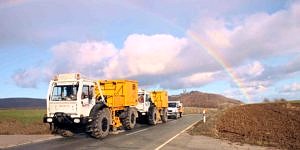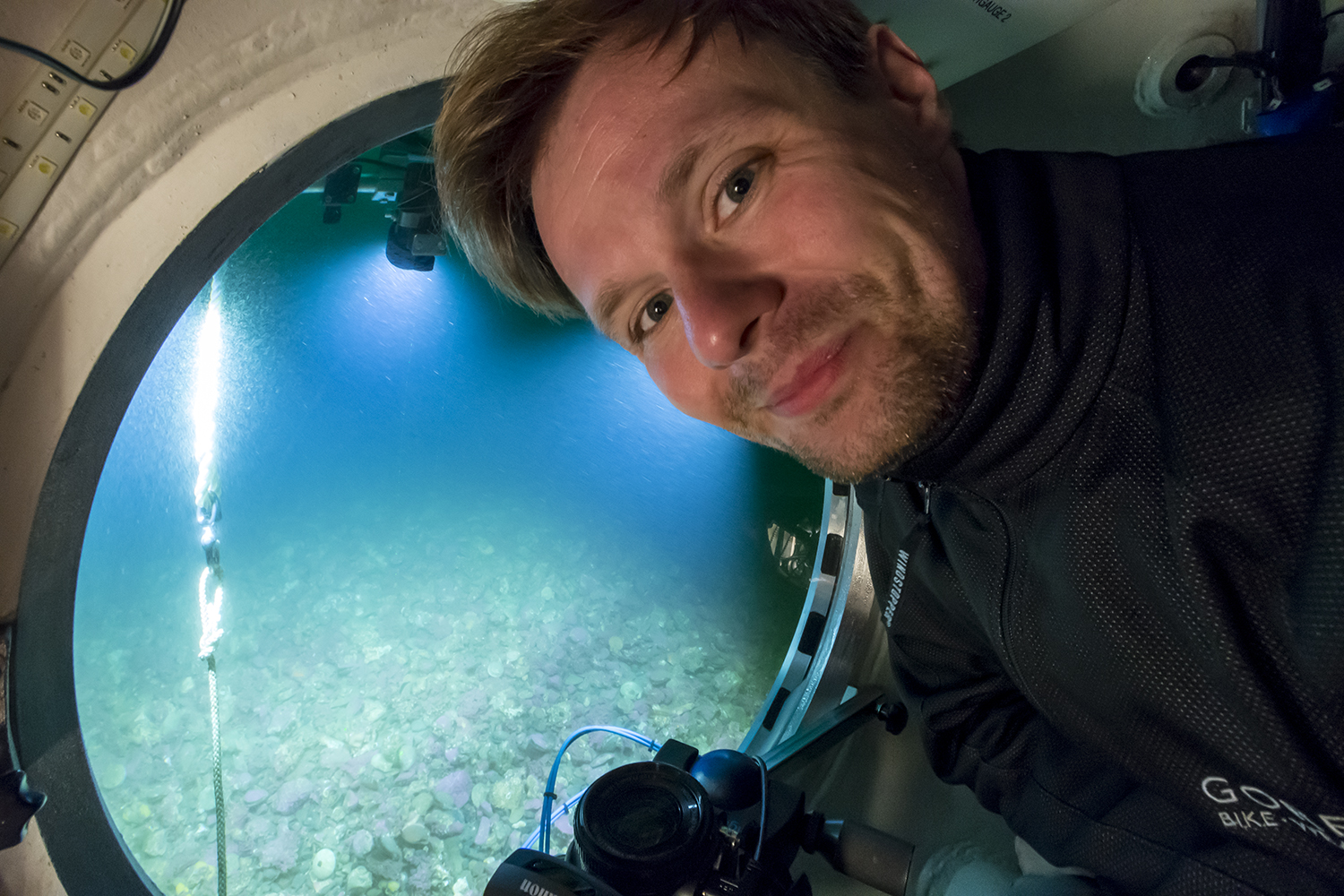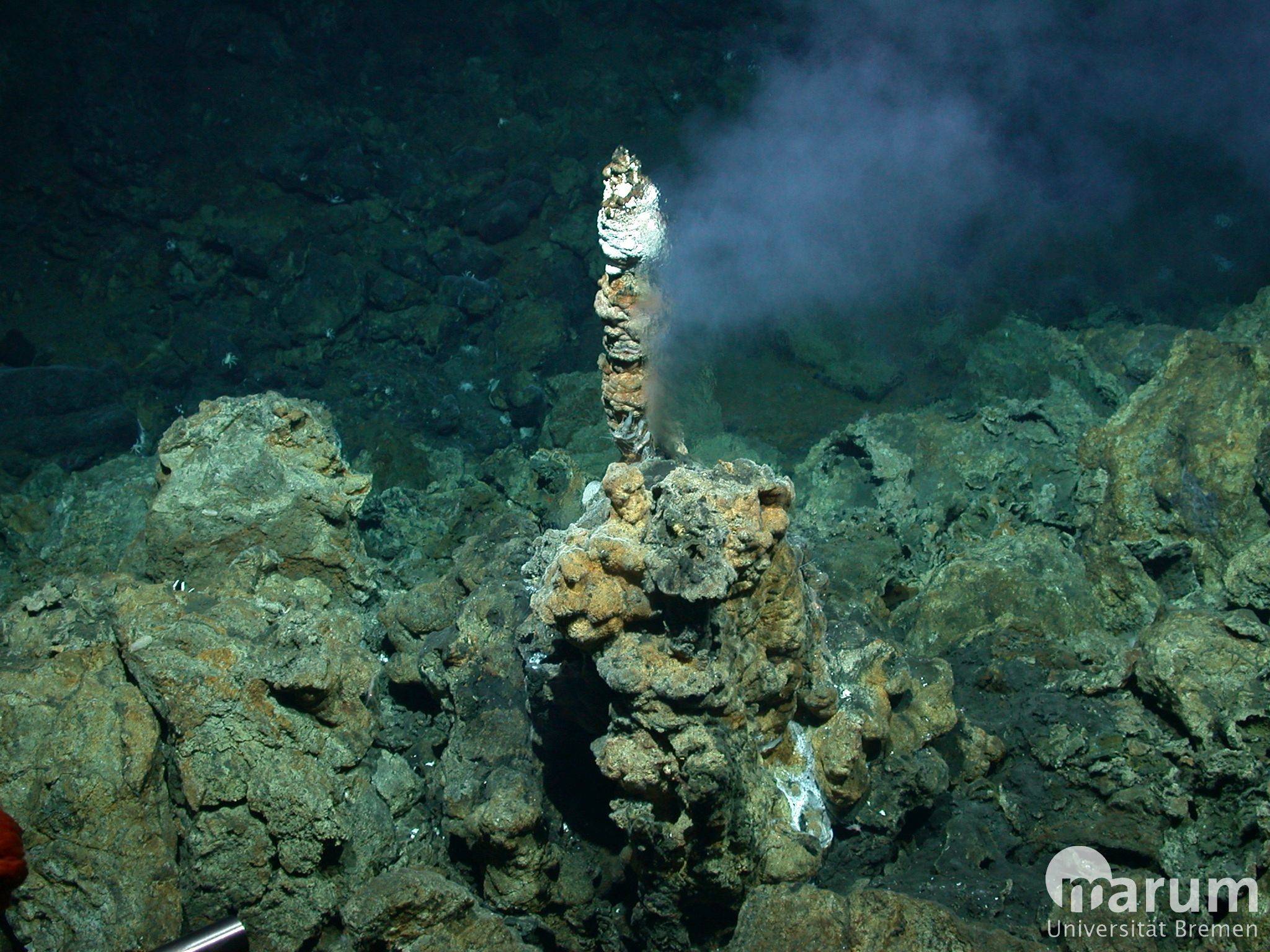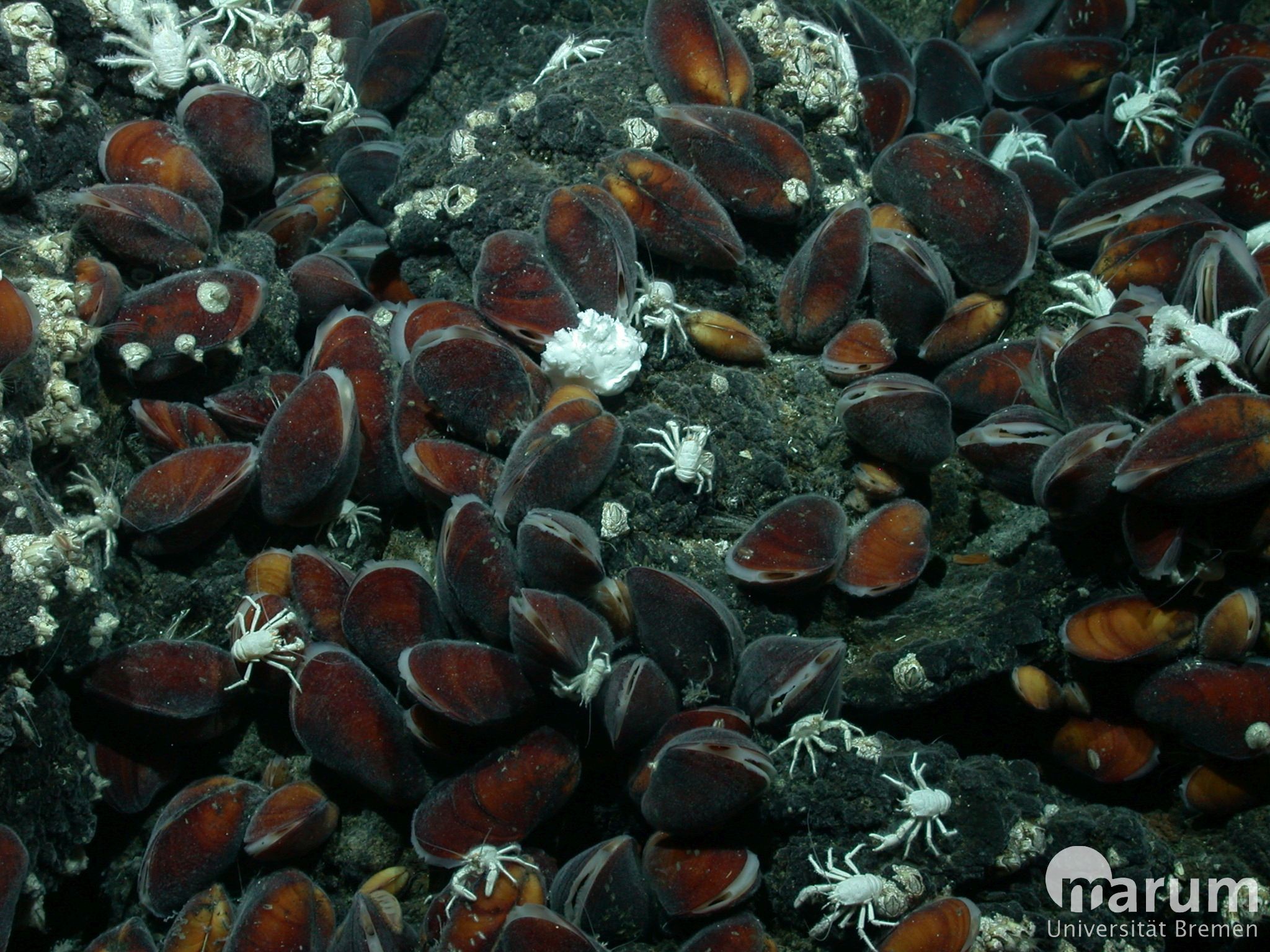Under the sea
…hides a world of its own: Active volcanoes shape the underwater landscape, while living limestone nodules provide accommodation for countless inhabitants.
by Roland Knauer
Hard corals are regarded as the star architects of the oceans because the tiny polyps build gigantic underwater cities in the warm seas of the Tropics. Their limestone skyscrapers grow together to form a colourful skyline which, at a length of over a thousand kilometres, easily dwarfs the megacities of mankind. A myriad variety of flamboyant underwater organisms swarms through these enormous and at the same time filigree structures; countless species use tropical reefs as their nursery, hunting ground or hiding place. And similar to builders on land, numerous architects below the sea are also erecting homes for thousands and thousands of underwater inhabitants who do not live on a coral reef.
Underwater builders
Among these oceanic architects are red algae, which Dr. Sebastian Teichert from FAU’s Chair of Palaeoenvironmental Research is examining in the Arctic Ocean near Spitzbergen. Although these algae also use limestone for their building projects, they prefer simple, round nodules in place of filigree architecture. And instead of the skyline of a coral reef, what the researcher sees under water is a flamboyant field of scree full of the limestone nodules built by the red algae. ‘With the JAGO submersible of the GEOMAR Helmholtz Centre for Ocean Research Kiel, we can collect these limestone nodules from the seabed and then examine them in the lab,’ explains Teichert.
At the centre of such nodules he usually finds a pebble that glaciers transported there long ago or the shell of a long dead clam. ‘In a similar way to how lichen grows on a tree, several red algae often settle on such a substructure at the same time, which can by all means belong to different species,’ says Teichert, summarising the moment when such limestone nodules were born, for which the scientific name is ‘rhodoliths’. To grow, the red algae use sunlight as a source of energy – just like plants on land. To have a good grip and protect themselves, the algae secrete lime, which over the years forms a solid layer similar to corals. Because underwater currents and living organisms on the search for food constantly move and turn over the pebbles and clam shells together with the red algae, this limestone layer grows in all directions over the course of time so that nodules form as if by themselves.
These nodules are mostly 15 to 20 centimetres in diameter, making them only slightly smaller than a football. And they are often as old as the hills. After all, their limestone layer only grows at a speed of about a third of a millimetre per year. One of these rhodoliths was already 92 years old, others are likely to be even far older. Sebastian Teichert finds most of these limestone nodules at a depth of about 40 metres, but some also grow about 80 metres under the waves and others at just 15 metres. The red algae on these nodules capture sunlight in their outer layers and continue slowly to grow. In contrast, the deeper layers have long died off. It is precisely here that piddocks seek protection, which drill their way through the outer shell until they reach a depth where they are safe from predators. Water flows through a small channel to the piddocks, which are about three centimetres in size, from which they filter their food. ‘Sometimes 10 or even 15 of these molluscs can live in a single rhodolith without harming the red algae,’ explains Teichert. If the molluscs die, new tenants – such as other shells or else brittle stars, which are one of the cod’s favourite prey – often move in. So red algae do not build a safe haven just for themselves but also provide a habitat for a whole range of other animals. In this way, the little builders – like tropical corals – make a major contribution to enriching biodiversity in the waters around Spitzbergen.
The volcanoes near Athens
And by no means do they do this just in the Arctic Ocean but instead in practically all the seas and oceans around the globe and as far as the Tropics. For example, Professor Karsten Haase from FAU’s Chair of Endogenous Geodynamics has collected such rhodoliths from the bottom of the Mediterranean Sea. However, that was rather more a coincidence because he was actually looking for volcanic rocks. After all, not just corals, red algae and other living organisms are hidden below the sea but also fully fledged volcanoes. Part of the African Plate is sinking in the Earth’s interior in the Aegean Sea under such volcanoes and making the rock melt a little in the process. Karsten Haase is analysing similar events in the South Pacific too, where hundreds of volcanoes are also hidden under the waves. A huge tectonic plate, which carries large parts of the Pacific Ocean on its back, collides at that spot with another, which in turn accommodates Australia and New Zealand along with part of the south-western Pacific. Since these enormous plates only shift a few centimetres each year, the whole thing resembles the collision of two steamrollers in slow motion. The Pacific Plate is pushed diagonally under the Australian Plate in the process. While such subduction indeed takes place in other regions around the globe, geoscientists are currently measuring record speeds in plate movement around the archipelago of Tonga: ‘The plates there are sliding past each other at a rate of 24 centimetres per year,’ explains Haase.
Bycatch
There are reports dating back to Ancient Greece of volcanic eruptions near Athens about which scientists in the 21st century, by contrast, know little. When Karsten Haase took a closer look at the seabed at depths of 50 to 400 metres with the research ship Poseidon, he discovered not only one but six volcanic structures just 50 kilometres from Athens. And when the researchers took lava samples of these apparently extinguished volcanoes on board for closer analysis in the lab, they came to realise that others had found the volcanoes long before them: The chunks of lava were covered in a thick layer of rhodolith limestone that zealous red algae had produced.
As they collide, a trench is forming in the sea, the bottom of which, the Vityaz Deep II in the Pacific Ocean just south of Tonga, is 10,882 metres below sea level. Behind this 2,500-kilometre long Kermadec-Tonga Trench, the Pacific Plate is slowly sinking deeper and deeper under the Australian Plate. With each further kilometre, the pressure increases and presses water out of the Pacific Plate into the hot interior of the Earth above it, which slowly softens as a result. This viscous molten rock weighs slightly less than its somewhat more solid surroundings, which is why it rises slowly upwards. If this magma reaches the seabed, a volcano erupts in the depths of the ocean. Following this pattern, rows of volcanoes are formed in subduction zones from South and North America to Japan to Indonesia that often resemble a string of pearls.
However, in the sea around Tonga the underwater volcanoes do not just erupt along these rows but also in many other places. ‘Perhaps the very rapid immersion of the Pacific Plate rips open the Earth’s crust at other spots too where volcanoes then erupt,’ ponders Haase. What is different around Tonga in comparison to the rest of the world? Haase and his colleagues got to the bottom of this in June 2018 with the Sonne research ship and the QUEST diving robot from the MARUM Centre for Marine Environmental Sciences of the University of Bremen.
Black smokers
Steered by a pilot on board the Sonne, the QUEST, which is self-propelled but connected to the ship via a cable, moves across the seabed at depths of up to 4,000 metres and explores its surroundings with high-resolution cameras. ‘We discovered a surprising number of black smokers down there,’ reports Haase. This is the term for formations on the sea floor that appear on volcanoes as they cool down. With temperatures of up to 300 °C and more, a solution rises upwards that contains no end of minerals. When it comes into contact with the cold seawater with a temperature of just 2°C at these depths, these minerals are precipitated as black iron or copper sulphides. The compounds produced in this dark cloud of the black smoker rain slowly down on the surrounding seabed. At certain temperatures and under certain conditions, copper ores and gold are also precipitated out of the same hot liquids and deposited on the inside of the volcanoes. ‘This means that we can potentially observe how such deposits once formed, from which many millions of years later we can mine copper on land, for example,’ explains Haase.
That’s why the researchers on board the Sonne are very excited about the high-resolution pictures transmitted to the ship. If they discover something particularly interesting, they are able to take samples: Robotic arms attached to the QUEST are capable of collecting rock samples and bringing samples of the liquid flowing out of the black smoker back on board in special containers so that they can be examined later under the microscope in the lab.
There, the researchers calculate, for example, how old the rocks are and can thus perhaps estimate more accurately the point in time when the Pacific Plate began sliding into the depths near Tonga. The researchers also want to learn from the volcanic rock samples how the magmas once formed and which processes gave them their shape as they rose up in the direction of the sea floor. The composition of the liquids that flow out of the black smokers not only reveals whether new deposits of valuable ores are perhaps forming there right at this moment but is also an indication of where and how these solutions were produced. The team is still in the process of collating and studying its data. But it can already be assumed that at the end of the day the researchers are likely to understand a little better what is currently going on in this former underwater volcanic landscape near Tonga in the South Pacific. And in this way they are slowly but surely airing the secrets hidden deep under the waves.

Under the earth
FAU geologists are using vibroseismics to investigate the situation under the ground in Franconia. This method involves vibration vehicles moving along marked measuring lines. They send small vibrations down into the ground, which are then reflected back to geophones above the surface of the earth. The geologists then use these geodata to obtain a two dimensional picture of the ground below. Read more here.
About the author
Roland Knauer has a doctoral degree in natural sciences, and lives and works as a journalist and author with a focus on natural sciences in Lehnin.
FAU research magazine friedrich
 This article first appeared in our research magazine friedrich. You can order the print issue (only available in German) free of charge at presse@fau.de.
This article first appeared in our research magazine friedrich. You can order the print issue (only available in German) free of charge at presse@fau.de.





